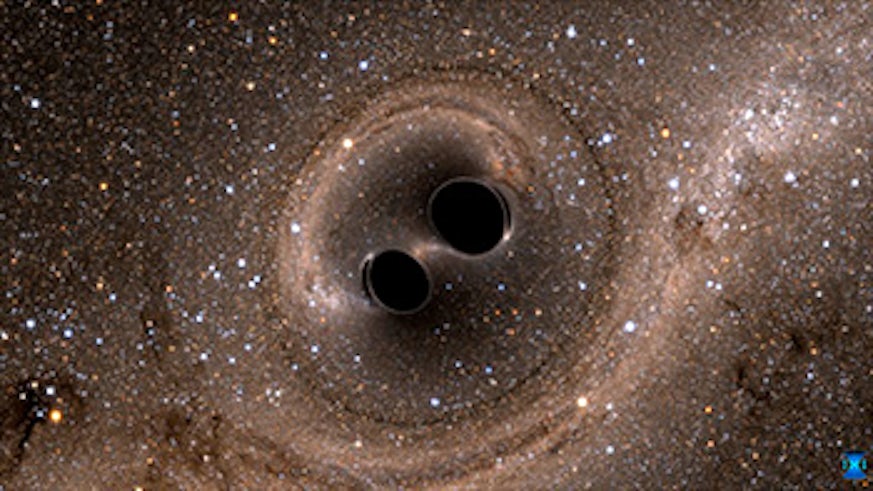Listening to Einstein’s Universe at the Royal Society exhibition
4 Gorffennaf 2017

Academics from Cardiff University are showcasing their world-leading research to over 15,000 members of the general public this week as part of the Royal Society’s Summer Exhibition in London.
From new ways of observing the Universe to the power of catalysis, the public will be able to explore how Cardiff University’s research is helping to tackle some of the most pressing issues currently facing humanity.
At the Listening to Einstein’s Universe exhibit, the Gravitational Physics Group will explain how a team of 1000 scientists – collectively known as LIGO – managed to detect gravitational waves for the very first time.
These tiny ripples that travel through space and time are emitted after a violent event in the Universe, such as the collision of two black holes, and have only ever been observed three times since they were first detected in 2016.
Scientists are now able to use these gravitational waves much like a telescope, and look back in time to study how drastic events in the Universe unfold.
At the exhibit, visitors will learn how scientists go about detecting the extremely tiny signal of a gravitational wave when it hits Earth, and will also have access to an interactive game in which they can hunt down black holes in the Universe.
Dr Chris North, STFC Public Engagement Fellow from the School of Physics and Astronomy, said: "The era of Gravitational Wave astronomy has truly begun, and it's very exciting to be able to talk about the astounding technological and scientific developments that it involves. Presenting our research to the public is one of the highlights of the job, and doing so in such a prestigious venue as the Royal Society is a privilege."
Moving from the large scale to small scale, just a stone’s throw away from this exhibition will be another group of Cardiff University scientists at the ‘Zoom for Improvement’ exhibition. Jointly led by the Cardiff Catalysis Institute they will demonstrate how the field of catalysis is being used to produce the goods, services and energy that we use in our everyday lives.
The Royal Society Summer Exhibition will run from Tuesday 4 July – Sunday 9 July at the Royal Society’s headquarters in London with a packed programme of events, including 22 exhibits and a range of talks and activities. For more information, you can visit this page on the Royal Society website.